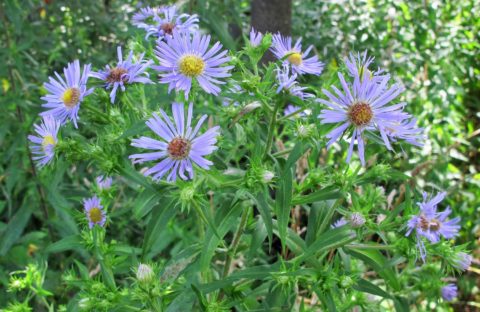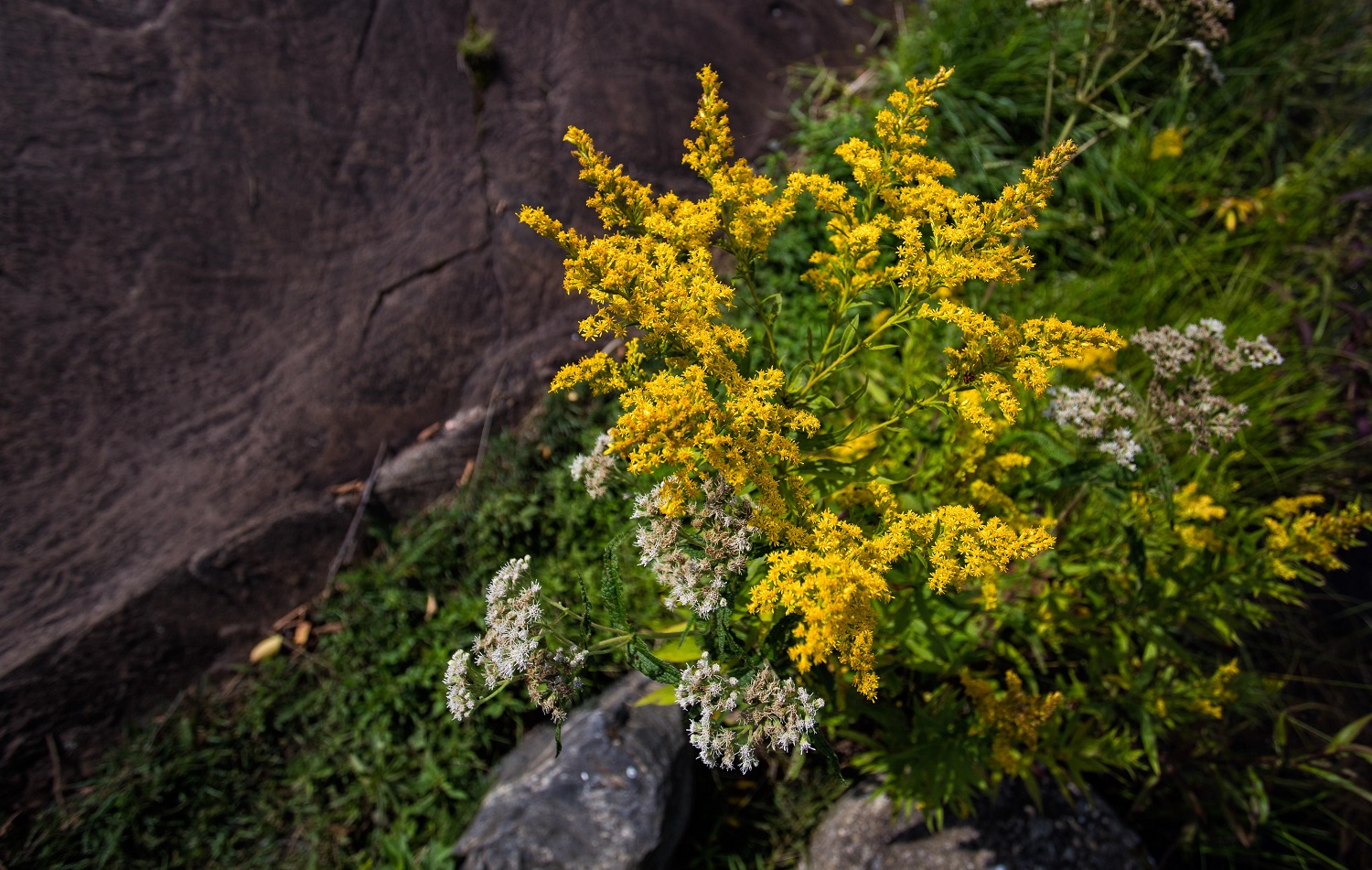Today’s post comes to us from Discovery Program Specialist Dave Sproule.
Around the middle of August, Ontario’s landscape starts to change colour. A bit of gold here, swaths of white there, and even a touch of purple in places. No, it’s not fall yet, although the odd maple tree may think so. It’s actually the “second flowering of summer,” and it lasts well into the autumn.
While many of the flowering plants in the landscape have quit for the season, the asters and goldenrods are just getting going.
Since they begin flowering in mid-August and continue into the fall when few other plants are flowering, asters are an important source of food for many animals:

- monarch butterflies need to fuel up for their long migration to Mexico
- bumblebees and solitary bees are still active into the fall and need food until they hibernate
- migrating and resident birds take advantage of aster seeds
- small rodents like voles store the seeds for the long cold winter
Asters grow in a variety of habitats, from dry roadsides, to dark moist forests, to wetland edges. Asters and goldenrods are part of the sunflower family and are also known as “Composites.” Their flowers look like a single discrete flower, but are actually made up of dozens of tiny flowers packed together in one flowerhead.

This strategy of having many flowers bunched together may make it easier for pollinators like bumblebees and butterflies to pollinate the aster’s flowers. The many seeds on a single seedhead are blown away by the wind on their tiny feathery umbrellas. The strategy is a successful one, making their family the most diverse on the planet.
Looking for asters in Ontario Parks?
Large-leaved Asters grow in the shadowy forest, and have large leaves to collect extra light in the darker habitat. They only flower when there is more light, so when trees fall in the forest and create openings, the asters take advantage and flower. Without that light, they spread underground by sending out roots.
Flat-topped Asters are common white flowers, and are the only food source for the caterpillar of Harris’s Checkerspot Butterfly, a pretty orange, white, and black butterfly. There are a number of butterfly species that feed on a single species of aster.
Bog Aster is a small, purple-flowered plant that tends to grow in in wet, acidic sphagnum bogs. It is not commonly seen, so you’ll have to keep your eyes open to find one.

New England Aster is a very common aster in Ontario, despite the name. It has a pretty purple flower with many petals, making it a popular garden plant, as well as a native aster.
Canada Goldenrod is one of a number of native goldenrod species in Ontario, but they tend to look very similar to the casual observer. Goldenrods are an important source of nectar for insects, partly because they have so many flowers and partly because they are so abundant in the landscape.

Grouse, porcupines, groundhogs, voles, and deer all occasionally feed on goldenrod.
Ready for an aster adventure?
Asters keep it feeling like summer all through the autumn.
You can find their colourful petals at many Ontario Parks, including:
- Sturgeon Bay Provincial Park
- Grundy Lake Provincial Park
- Killarney Provincial Park
- Halfway Lake Provincial Park
- Killbear Provincial Park
- Restoule Provincial Park
- Six Mile Lake Provincial Park
